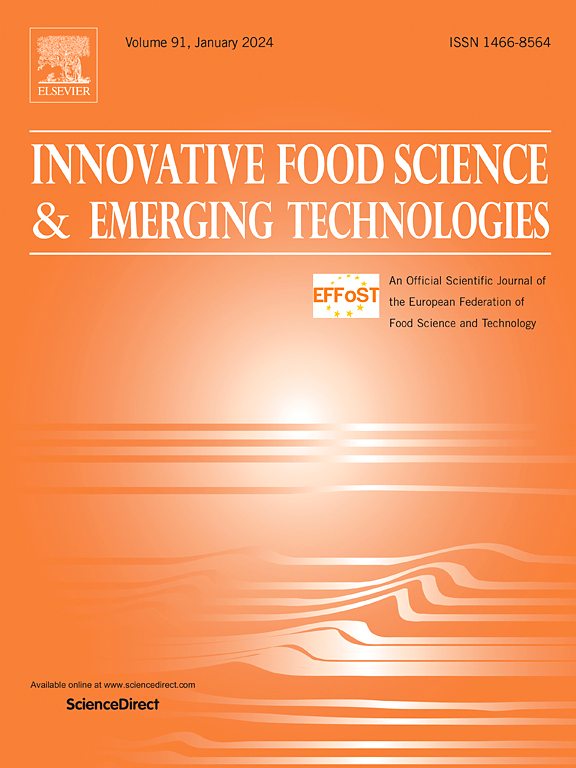Effect of alternating current electric fields on the preservation of fresh-cut Chinese cabbage and spinach
IF 6.3
1区 农林科学
Q1 FOOD SCIENCE & TECHNOLOGY
Innovative Food Science & Emerging Technologies
Pub Date : 2025-03-15
DOI:10.1016/j.ifset.2025.104005
引用次数: 0
Abstract
As the increasing demand for food safety, it is crucial to find a safer and more effective method to replace traditional preservation of fruits and vegetables. Electric field preservation, as a novel preservation technology, not only prevents contamination of fresh vegetables, but also mitigates adverse effects on human health. In this paper, comparing conventional refrigeration as a benchmark, the impact of an alternating current electric field (ACEF) on the storage quality of fresh-cut Chinese cabbage and spinach was investigated. The differences in preservation effectiveness were determined by analyzing the changes of quality indicators, nutrients and four microbial indicators (Total Microbiological Numbers, E. coli, Molds, S. aureus) within 30 days at a storage temperature of 4 °C. The spoilage rates of two fresh-cut vegetables with ACEF were lower compared with those without ACEF, reduced by 30 % and 25 %, respectively. In addition, the weight loss rate of the Chinese cabbage and spinach with ACEF was reduced by 0.10 % and 0.40 %, respectively. Between the two groups, the soluble solids content (SSC) of the Chinese cabbage with ACEF was about 4.93 % higher than without ACEF. On the contrary the SSC of the spinach with ACEF was consistently lower than without ACEF. Meanwhile, vitamin C content of the Chinese cabbage and spinach with ACEF was 4.58 % and 3.95 % higher than that without ACEF, respectively. Moreover, ACEF treatment inhibited microbial growth, resulting in lower levels of total microbiological numbers (9.19 %, 8.96 %), E. coli (12.72 %, 7.55 %), molds (7.88 %, 17.28 %), and S. aureus (10.16 %, 11.50 %) in the Chinese cabbage and spinach compared with those without ACEF treatment. All these results indicated that ACEF could represent an interesting preservation technique, which maintains the freshness of fresh-cut vegetables for a longer period of time.
求助全文
约1分钟内获得全文
求助全文
来源期刊
CiteScore
12.00
自引率
6.10%
发文量
259
审稿时长
25 days
期刊介绍:
Innovative Food Science and Emerging Technologies (IFSET) aims to provide the highest quality original contributions and few, mainly upon invitation, reviews on and highly innovative developments in food science and emerging food process technologies. The significance of the results either for the science community or for industrial R&D groups must be specified. Papers submitted must be of highest scientific quality and only those advancing current scientific knowledge and understanding or with technical relevance will be considered.

 求助内容:
求助内容: 应助结果提醒方式:
应助结果提醒方式:


